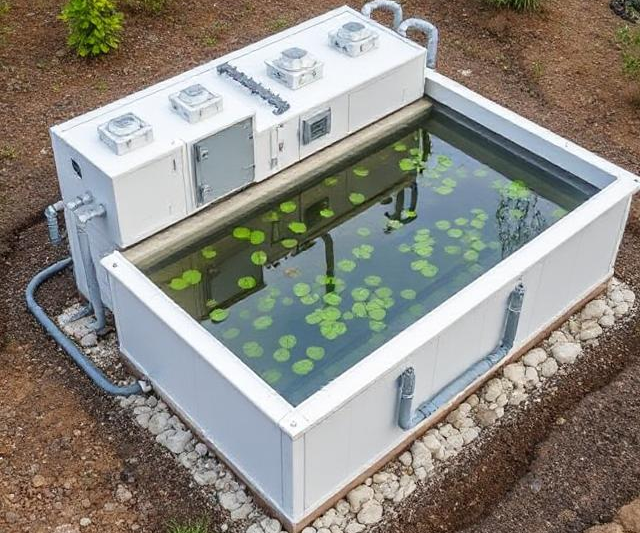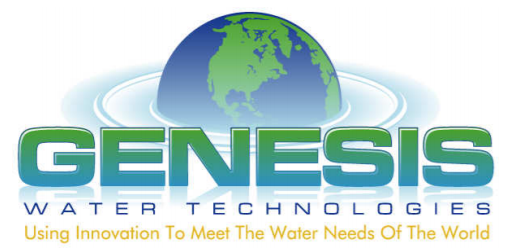Small Scale Wastewater Treatment Systems: The Future of Water Management

Finding the right wastewater treatment solution can be tricky, especially for smaller operations. Modular small-scale wastewater treatment systems offer practical solutions for various settings, from hotels and resorts to real estate developments and remote communities. How do you pick the right system? Let’s explore these systems and their importance.
Table of Contents:
- Understanding Small-Scale Wastewater Treatment Systems
- Benefits of Small-Scale Wastewater Treatment
- Designing and Implementing Your System
- Small-Scale Wastewater Treatment Technologies: A Detailed Assessment
- Conclusion
- FAQs about Small-scale wastewater treatment systems
Understanding Small-Scale Wastewater Treatment Systems
Small-scale wastewater treatment systems handle wastewater where connecting to a centralized municipal wastewater system isn’t feasible. These decentralized systems treat wastewater near the source. This reduces the need for extensive piping and pumping, often used for community wastewater infrastructure.
Types of Small-Scale Systems
Several small-scale systems exist. Decentralized systems handle sewage from homes and businesses close to the source.
This is ideal for areas with scattered populations. These systems are sometimes more practical due to distance, terrain, or cost, compared to larger centralized solutions. Centralized systems collect and treat all wastewater in one location.
These are better suited for densely populated areas. Centralized systems can be expensive to implement for individual homes and businesses due to complex construction. Some treatment plants are pre-manufactured and ready to install, while others are built on-site.
Genesis Water Technologies designs and supplies pre-assembled domestic wastewater treatment systems. These systems can be a low-cost alternative to traditional wastewater treatment services.
Key Treatment Processes
Most small-scale systems use biological processes, which employ microorganisms. Microorganisms break down organic matter, mimicking natural decomposition. These treatment solutions vary in design but have similar end goals. Wastewater treatment technologies are varied.
Here’s a breakdown of each wastewater treatment step:
| Process | Description |
|---|---|
| Preliminary Treatment | Removes large debris like sticks and rocks using screens, grates, and grit chambers. This prevents debris from interfering with later treatment stages, reducing wear and tear and ensuring continuous operation. This step safeguards against costly maintenance and unscheduled repairs to the collection systems. |
| Primary Treatment | Separates solids by settling or flotation (Mallik and Arefin 2018). It might also involve adding chemical coagulants or flocculants like Zeoturb liquid bio-organic flocculant from Genesis Water Technologies, enhancing solids removal from the wastewater flow. This focuses on primary clarification treatment of domestic wastewater and sewage collection. |
| Secondary Treatment | Removes dissolved and suspended organic matter through aeration (e.g., AB Jet diffusers) and bacteria (e.g., Mbio MBBR Media or BioStik). Alternatively, this step can utilize a continuous batch treatment process using GCAT catalytic activation technology units alongside sustainable Zeoturb dosage. |
| Tertiary Treatment | Removes additional contaminants before discharge or reuse (Mallik and Arefin 2018). Advanced filtration media like Natzeo treatment media and coconut shell carbon further improve effluent quality. This “polishes” effluent after secondary treatment, tackling non-biodegradable contaminants. It eliminates excess nutrients, microorganisms, or pharmaceuticals, depending on discharge and reuse requirements. It uses disinfection such as Genclean-Muni, filtration, or specialized chemical treatments for industrial wastewater contaminants, often addressing the needs of tribal communities. |
Benefits of Small-Scale Wastewater Treatment
Small-scale wastewater treatment has many advantages. It protects the environment, allows for water reuse, and can be cost-effective through resource recovery (e.g., soil amendment creation).
In water-scarce regions, treated water becomes a valuable resource for non-potable uses, addressing some of the issues faced by small communities. There are several initiatives aimed to improve sanitation and recover valuable resources from domestic wastewater for hotels/resorts as well as small communities and developments.
Small communities benefit from specialized treatment like wastewater lagoons, offering affordable wastewater management. The ESRISS project demonstrates the economic benefits of sanitation upgrades, creating jobs in small villages (www.sandec.ch/esriss). Small-scale treatment offers a way to improve sanitation services.
Designing and Implementing Your System
Planning is essential for a successful small-scale wastewater treatment system. Here’s what to consider:
Site Assessment
Evaluate the site’s soil type, topography, water table depth, and proximity to sensitive areas (EPA Small and Rural Wastewater Systems). These factors inform system design decisions.
System Selection
Many factors determine the best technology: wastewater type, treatment level, land availability, and local codes, impacting the choice for basic wastewater services. Genesis Water Technologies offers modular systems globally, providing solutions for small sewage treatment plants in various locations.
Consider small, modular, or containerized packaged plants for quick installation, particularly for hotels/resorts and small developments/communities needing rapid deployment. Modular assembly allows pre-construction of tanks and piping, accelerating startup timelines. Many communities, hotels/resorts lack access to adequate sustainable wastewater treatment systems.
Operation and Maintenance
Regular maintenance, including performance monitoring and sludge removal, is crucial (EPA Wastewater Treatment). Consider automation, remote monitoring, and predictive maintenance. Partner with an experienced technician for planned preventative and emergency maintenance.
The EPA website provides technical assistance, training, and maintenance resources for smaller and rural water treatment systems, especially in Tribal areas. The EPA also offers reporting mechanisms for waste, abuse, and fraud (EPA Fraud Waste Abuse Reporting Mechanisms). This community assistance aims to improve public health by removing pollutants.
Small-Scale Wastewater Treatment Technologies: A Detailed Assessment
Small-scale wastewater treatment encompasses various technologies. These decentralized technologies handle capacities ranging from individual homes to small rural communities. These technologies represent a shift toward decentralized wastewater treatment.
Septic Systems
Common in rural homes and small businesses, these individual septic systems are a low-cost alternative to traditional sewage treatment plants. A buried chamber pre-treats sewage. Then, soil dispersal or surface water discharge occurs, followed by polishing via secondary or tertiary treatment. These are part of the broader wastewater treatment services available.
Aerated Treatment Systems
These systems use air to enhance microbial breakdown in bioreactors. Several treatment plants offer packaged and premanufactured solutions, including small batch reactor systems like the GWT BioSTIK modules. These systems often remove nitrogen before discharge.
Constructed Wetlands
These systems use natural ecosystems with plants. The plant root systems filter wastewater, removing microorganisms and improving local ecosystems’ health, like nearby rivers and groundwater. This helps with the treatment of community wastewater.
Membrane Bioreactors (MBRs)
MBRs, utilize advanced filters to separate solids and liquids while enhancing biological activity. Small-scale packaged plants with membranes can operate effectively at various levels, achieving suitable effluent quality. MBR systems often have certifications for small-batch treatment, aiding in basic wastewater management.
Many small-scale treatment plants use MBR membranes or variations for separation and filtration in various settings. These technologies offer small communities’ effective ways to remove pollutants from wastewater generated by households and businesses.
These systems typically required skilled staff to operate as they are more complex to operate and maintain.
Conclusion
Small scale wastewater treatment systems play a critical role in safeguarding public health, protecting the environment, and supporting sustainable growth. By leveraging innovative technologies and tailored design approaches, these decentralized solutions offer cost-effective, energy-efficient, and scalable options for both rural communities and emerging industries. As new regulations and environmental concerns continue to drive demand for cleaner water, small scale wastewater treatment systems can provide a future-focused strategy that ensures long-term resilience, compliance, and water resource stewardship.
At Genesis Water Technologies, we specialize in helping clients worldwide implement reliable, high-performance small scale wastewater treatment solutions that meet stringent quality standards while reducing operational costs.
Ready to enhance your water management strategy and safeguard your community or business? Contact the team of water treatment specialists at Genesis Water Technologies today to discover how our advanced, eco-friendly processes can elevate your wastewater treatment system and support your sustainability goals.
Partner with us to unlock innovative solutions that empower your community development or hotel/resort to embrace a cleaner, more efficient future—one drop at a time.
FAQs about Small-scale wastewater treatment systems
What are the 4 types of wastewater treatment?
The four types are preliminary, primary, secondary, and tertiary. They range from removing solids and debris to microbial breakdown and specialized contaminant removal. These different levels of treatment offer different solutions based on your sewage treatment needs.
What is small-scale water treatment?
Small-scale water treatment handles smaller water volumes where centralized systems aren’t practical. These small sewage treatment systems are crucial for public health in border communities.
What are low-cost wastewater treatment methods?
Inexpensive options include septic tanks, constructed wetlands, and anaerobic lagoons. Several other affordable options exist for small sewage treatment.
What are the three types of wastewater systems?
Key wastewater system types are: collection systems, which gather wastewater; treatment facilities, which clean wastewater; and disposal systems for the treated wastewater which can not be drank (non potable use), into the environment.

